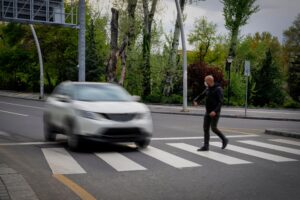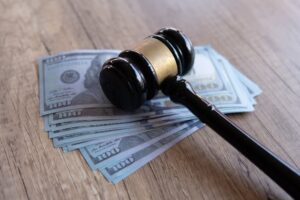In the aftermath of a pedestrian accident, you may be dealing with physical injuries, emotional distress, and financial burdens. Understanding your legal options can help you go after the full and fair compensation you deserve. Contact a New Hampshire pedestrian accident attorney to pursue your legitimate compensation.
Understanding Liability in Pedestrian-Car Accidents

In most cases, drivers have a higher duty of care towards pedestrians due to the potential for severe harm. Liability can be influenced by factors such as:
- Driver negligence: Speeding, distracted driving, or failure to yield right-of-way
- Road conditions: Poor lighting, lack of crosswalks, or malfunctioning traffic lights
- Vehicle defects: Brake failures or other mechanical issues
A thorough investigation is often necessary to establish liability accurately.
Legal Options for Injured Pedestrians
1. Insurance Claims
The first and most common legal option is to file an insurance claim. This can be done through:
- The driver’s auto insurance: Most states require drivers to carry liability insurance that covers injuries to pedestrians.
- Your own insurance: If you have personal injury protection (PIP) or medical payments coverage, you may be able to claim regardless of fault.
- Uninsured/underinsured motorist coverage: If the driver is uninsured or their coverage is insufficient, your own policy may provide coverage.
Filing an insurance claim is a detailed process, so having legal representation is beneficial to ensure you receive fair compensation.
2. Personal Injury Lawsuit
If insurance negotiations fail to provide adequate compensation or if the accident resulted in severe injuries, filing a personal injury lawsuit may be necessary. A lawsuit allows you to seek damages for:
- Medical expenses (past and future)
- Lost wages and loss of earning capacity
- Pain and suffering
- Emotional distress
- Loss of enjoyment of life
Personal injury lawsuits must be filed within the statute of limitations, which varies by state. Consult with an attorney as soon as possible to protect your rights.
3. Wrongful Death Claim
In the tragic event that a pedestrian accident results in death, the victim’s family may have the option to file a wrongful death claim. This type of lawsuit seeks compensation for:
- Funeral and burial expenses
- Loss of financial support
- Loss of companionship and guidance
- Emotional suffering of surviving family members
Wrongful death claims are a lot to deal with. Having compassionate legal representation is essential in these cases.
Factors Affecting Your Legal Case
Several factors can impact the strength and outcome of your legal case:
- Comparative Negligence: Many states follow comparative negligence laws, which can reduce your compensation if you’re found partially at fault for the accident.
- Severity of Injuries: More severe injuries typically result in higher compensation due to increased medical costs and long-term impact on quality of life.
- Insurance Policy Limits: The amount of compensation you can receive may be limited by the at-fault party’s insurance policy limits.
- Evidence Quality: Strong evidence, including witness statements, surveillance footage, and expert testimony, can significantly strengthen your case.
- Legal Representation: An experienced pedestrian accident attorney can greatly improve your chances of receiving fair compensation.
Navigating the Legal Process
The legal process following a pedestrian-car accident can be overwhelming, especially when dealing with injuries and recovery. Here’s a general overview of what to expect:
- Initial Consultation: Meet with an attorney to discuss your case and explore your options.
- Investigation: Your legal team will gather evidence, interview witnesses, and consult experts if necessary.
- Demand Letter: Your attorney may send a demand letter to the at-fault party’s insurance company outlining your injuries and desired compensation.
- Negotiations: Most cases are settled through negotiations between your attorney and the insurance company.
- Litigation: If the other side can’t reach a fair settlement, your case may proceed to court.
- Trial or Settlement: Your case will either be resolved through a trial verdict or a settlement agreement.
Throughout this process, maintain open communication with your legal team and follow their advice regarding medical treatment and interactions with insurance companies.
Protecting Your Rights
As a pedestrian hit by a car, protecting your legal rights is paramount. Here are some key points to remember:
- Don’t accept early settlement offers without legal counsel
- Be cautious when speaking with insurance adjusters
- Keep detailed records of all accident-related expenses and treatments
- Follow your doctor’s treatment plan and attend all medical appointments
- Avoid discussing your case on social media or with individuals other than your attorney
By being proactive and informed, you can significantly improve your chances of receiving fair compensation for your injuries and losses.
Types of Compensation Available after a Pedestrian Accident

Pedestrian accident survivors may be eligible for compensation, depending on the circumstances of the accident and the severity of their injuries. The main categories of compensation are:
1. Economic Damages
Economic damages refer to quantifiable financial losses that result from the accident. These are typically easier to calculate as they often have specific dollar amounts associated with them. Examples include:
- Medical expenses:
- Emergency room visits
- Hospital stays
- Surgeries
- Medications
- Physical therapy
- Rehabilitation costs
- Future medical care related to the injury
- Lost wages:
- Income lost due to time off work for recovery
- Loss of future earning capacity if the injury affects your ability to work
- Property damage:
- Repair or replacement of personal items damaged in the accident (e.g., phone, laptop, clothing)
- Out-of-pocket expenses:
- Transportation costs to medical appointments
- Home modifications for accessibility
- In-home care services
2. Non-Economic Damages
Non-economic damages are more subjective and don’t have a clear monetary value. These damages compensate for the intangible losses and the overall impact the accident has had on your life. Examples include:
- Pain and suffering: Physical discomfort and emotional distress caused by the injury
- Emotional distress: Psychological impact such as anxiety, depression, or PTSD resulting from the accident
- Loss of enjoyment of life: Inability to participate in hobbies or activities you once enjoyed
- Loss of consortium: Impact on your relationships with spouse or family members
- Disfigurement or permanent disability: Long-term physical changes or limitations caused by the injury
Calculating non-economic damages often involves using methods such as the multiplier method (where economic damages are multiplied by a factor based on the severity of the injuries) or the per diem method (which assigns a daily rate to your pain and suffering).
Talk to Pedestrian Accident Lawyer About Your Case Today
At Coates Law Office, we help pedestrian accident victims navigate their legal options and fight for fair compensation. Our experienced team personal injury lawyers is ready to provide the support you need to move forward.
Contact Coates Law Office today for a free consultation. Your path to justice and recovery starts here.
